As someone who loves the world of game shows, I’m honestly amazed that there haven’t been many game shows based on video games. We have game shows based on board games – Monopoly, Scrabble, Scattergories, stuff like that. We had game shows that used a bunch of video games as its base like Starcade and Nick Arcade (ugh). But rarely one adapted from a single video game.
There’s only been one other attempt to make a video game into a game show, and that was the rather short-lived adaptation of You Don’t Know Jack way back in 2000. Cut to 2017, where a major television network greenlit a game show based on a video game property that, while still big, was well past its prime. And it floundered for nine weeks in primetime.
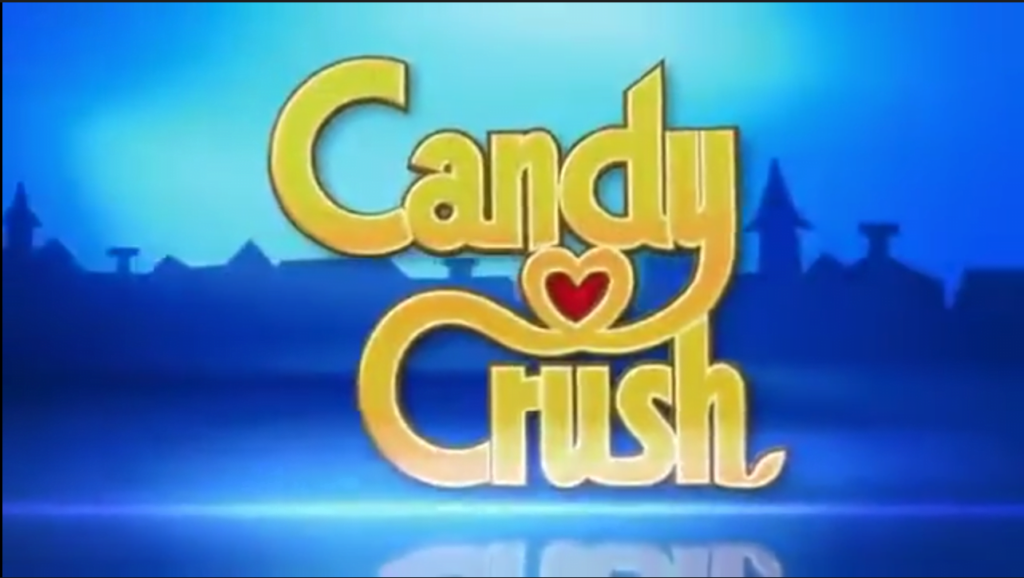
For a brief period in the summer of 2017, CBS aired a game show based on the hit mobile game franchise Candy Crush Saga. Called simply Candy Crush, it definitely fulfilled my curiosity of “what would a game show based on a popular mobile game be like?” But does it actually work as a game show? Judging by how short-lived it was, the answer is “probably not.” Despite that, I’m still curious about it. I’d seen an episode before when it was still new, but I needed to refresh my memory on whether or not it was any good, or if it deserved to be sent to the trash.
Since this game show is based on a hit mobile game, naturally I had to play a bit of the game show’s inspiration first.

Candy Crush Saga, the first in a long-running franchise by King Games, has a fairly simple premise: Using a board of various pieces of candy, one must try to match three of the same kind of piece by swapping two pieces connected to each other. Every level has a goal: hit a score threshold, eliminate a specific number of pieces, etc. Failure to do the challenge gives you the option of either spending gold bars – the game’s premium currency – to get extra turns, or losing a life and starting the level over. Each level introduces new hurdles to the gameplay, and there’s really no end goal, the levels keep going until you get bored or bother to complete them all, of which there’s over 1,000 levels worth.
I’m familiar with match-3 puzzle games – Bejeweled was played many a time in my high school years – but the sickly sweet style of Candy Crush Saga was a bit off-putting to me. It doesn’t help that a lot of the time the game often played itself, where I’d make one move and suddenly set off massive chain reactions for big points. But I understand the game’s addictive appeal, including how friends talked about the progress they made back in the day.

Fun fact: Until this article, I had never actually played any of the games in the Candy Crush series. Mobile and Facebook games are not something I dabble in too much these days – save for the occasional blog post like the most recent post about Bingo Story’s cross-promotion with The Price Is Right – but I figured it would be wise for me to finally get in on the game just for a better frame of reference on what the show was about. It was alright, but I stopped at around level 147 due to the game constantly losing connection and making it difficult to make progress. I wonder how far my friends ever got.
But enough about Candy Crush the video game. How the ever loving heck do you make a game show out of it? Let’s find out.
This article was originally up on Patreon one week early. If you wish to see this article before everyone else, you can pledge to my Patreon here. Just a buck will get you a chance to see it before everyone else.

This show was hosted by actor/TV personality Mario Lopez. Getting a somewhat-notable TV personality to host your game show is the expected for game shows in the modern age, and does surprisingly well despite not having a lot to do. Naturally, there’s a bit of post-production voiceover in spots, but otherwise he seems nice, friendly, and genuinely wanting to be there. He gets a B+ in my book.
Shockingly, this is not Mario’s first foray into game shows, as he hosted the second season of the oft-forgotten, yet fascinating Masters of the Maze in the mid-1990s. Now that’s an interesting kids game show that nobody really remembers.
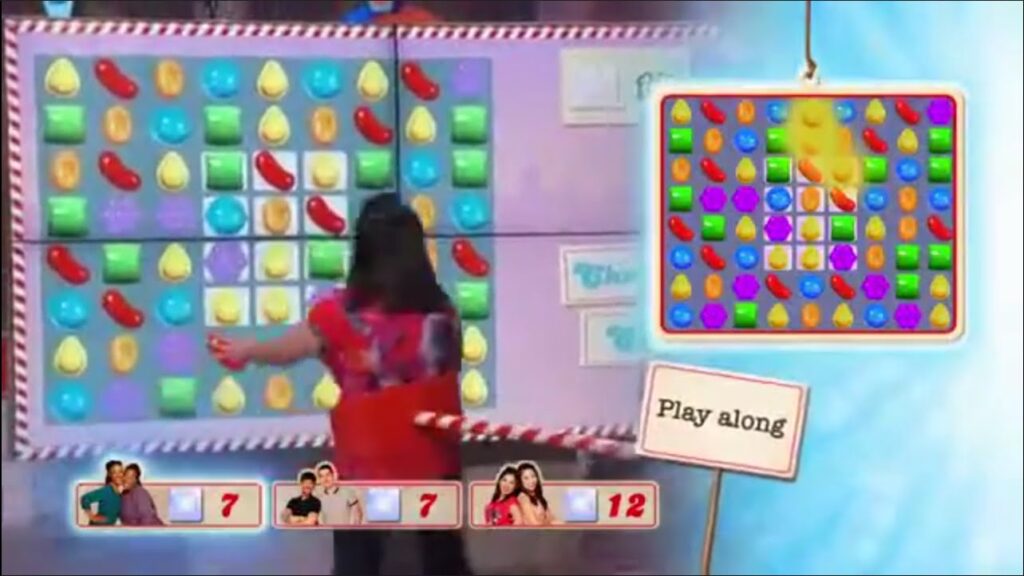
The rules went a little something like this: Four teams of two compete. To start, each of the four teams play a qualifying match of Candy Crush with a gimmick attached which changed from show to show. One involved the two players tethered together, switching positions once a teammate made a match. Another involved having the two players tethered to a set of plastic candy pieces which they have to fit through holes so the one player can reach the screen and make matches. Another involved a player having to climb through a bunch of jungle gym-like ropes to destroy a licorice piece, of which they’d have to climb through the ropes again, tag their partner, of which they’d climb through those ropes to get to the screen to destroy the other licorice piece. They shuffled between different qualifying games each show, so covering them all would take too much time here.

The winning team gets to play one of four games, featured on two giant screens – one tall and upright, the other flat on the floor – to make as many matches as they can with various gimmicks. Gimmicks such as using a giant pointer from above, or making matches while both players are on a special roll cart, or one using a ladder to climb the board while the other moves the ladder. Stuff like that. The team would make as many matches as they could in two minutes. If they made a four-piece match, 5 seconds were added to the timer, and a five-piece match added 10 seconds.

Afterwards, another qualifying game is played with the remaining three teams, of which they choose from the three other games, same rules apply. The remaining two teams do one final qualifying game, of which the winning team must beat the second place team’s score. The last team gets to play the unchosen game, again trying to get into the top two.

The two highest scoring teams in their two games play a final face-off. One player from each team takes half of the flat board to make matches so a key that’s drops to the bottom of the playfield. Once that happens, they must insert the key into a fancy joystick with candy-shaped levers as they help their partner make matches on the tall board, also split in half. First team to make 50 matches on the tall board won the game and $100,000.
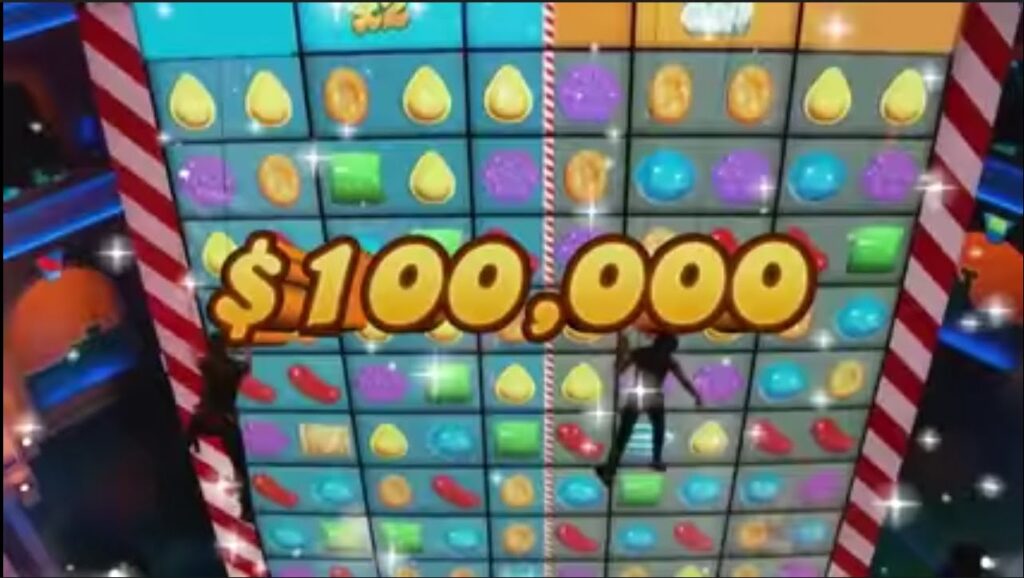
And that’s the game. For mostly being nothing but matching games for a whole hour, there’s not a whole lot of game there. While the show does try to push some form of interactive “play-along” angle in some places, the rest of the show is just people flailing around making matches for an unnecessarily large cash prize. It’s truly an “idiot’s game show,” one with no strategy or knowledge to speak of. Anybody could play this and win. And considering what contestants they got, this doesn’t surprise me.

This show aired Sunday nights on CBS, up against shows like American Grit on FOX, Steve Harvey’s Funderdome on ABC, and reruns of American Ninja Warrior on NBC. It started out well ratings-wise — an 1.1/5 share on its series premiere, winning the time slot — but that tapered off incredibly quickly, especially when the NFL preseason started later in August. The last two episodes were billed as a two-hour finale airing on Saturday night, which is considered the death knell for TV shows in the United States. Turns out watching people do a big version of a mobile game doesn’t really make for compelling, long-lasting television.
So, naturally, me being armchair game show producer, I tried to think how you could actually make this work. Well, I probably would’ve involved more individual games, but probably would’ve taken out the big touch screen idea and emphasized more competitive team modes. I would’ve also cut the game down to three teams, and maybe add a bonus round after the face off so they can genuinely earn that $100,000. But even then, it’s a game that really doesn’t have much going for it.
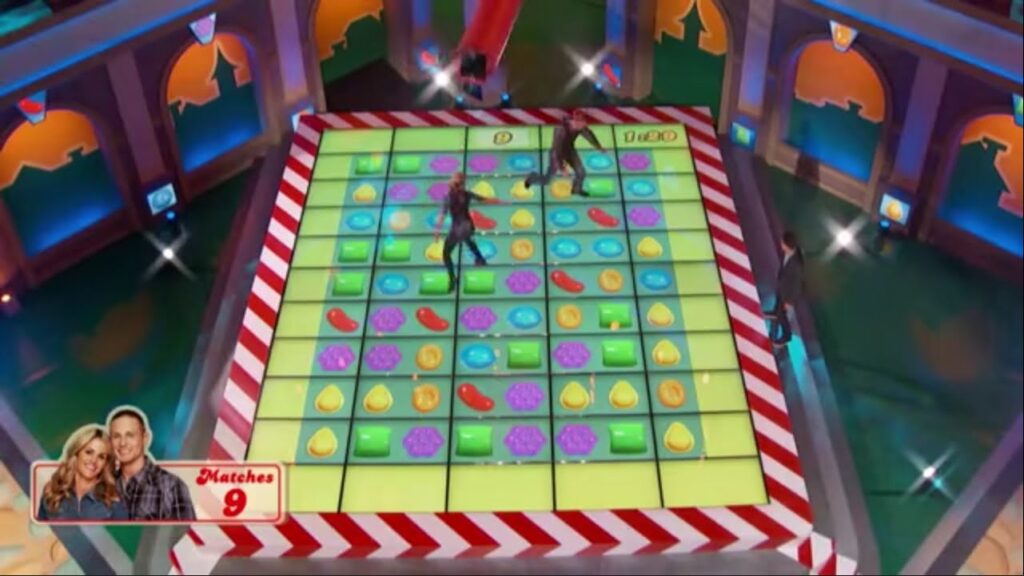
The biggest problem Candy Crush had was that it was clearly on the wrong network and took the wrong approach. This shouldn’t be played with adults for a big cash prize. This should be played with kids for trips to Disney World, or for less money like $10,000. Seeing a bunch of hyper adults futzing around with giant touch screens just seems absolutely silly, yet I could totally see a parent/child team do the same thing and make it more enjoyable.
Basically, I’m saying that Candy Crush should’ve been prime Nickelodeon fodder, not shoved out to CBS primetime. Making a game show more “kid friendly” isn’t a bad thing: Hole in the Wall, a game show based off a viral clip from a Japanese game show, was an absolute dud on FOX with adults, but when it moved to Cartoon Network and retooled so kids were the contestants, it was a better fit, even though the format was still too shallow. Granted, Candy Crush Saga is likely played more by adults than kids, but I think that’s the only way you make this work without it looking too corny.

If you want to watch this show, all ten episodes are available to purchase on Amazon or YouTube, though I would advise against spending money to watch that. It was also available on CBS All Access, though not through the recent Paramount+ rebranding, at least not what I saw there. I ended up watching bootlegged versions off YouTube for this article, and it seems there’s not much interest to remove those, so watch them there while you still can.
Candy Crush is an interesting little footnote in the world of TV game shows. A technical marvel based on a once-popular video game franchise, but mostly forgotten by the general TV populace. At least the idea of making a game show based on a video game wouldn’t be attempted again, right?

…I swear, people are making shows like these just to spite me.

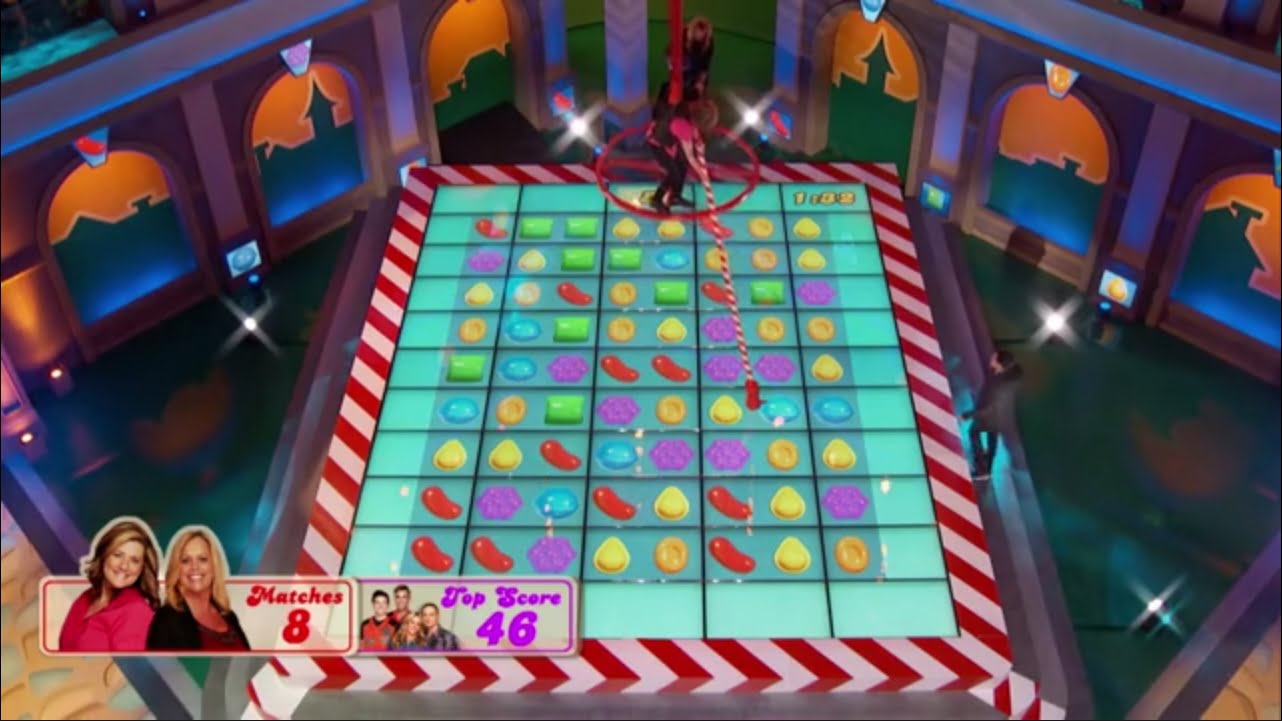
Leave a Reply